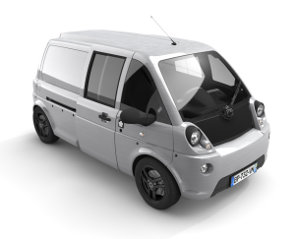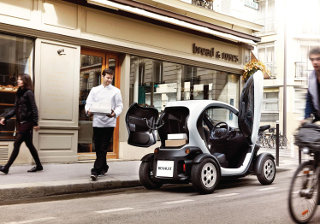 Electric vans are fast becoming a meaningful alternative to petrol and diesel-powered models, especially in urban environments and on large sites where mileage and duty cycles are predictable, and recharging points are readily available.
Electric vans are fast becoming a meaningful alternative to petrol and diesel-powered models, especially in urban environments and on large sites where mileage and duty cycles are predictable, and recharging points are readily available.
Renault has been a firm believe in the potential of electric vans and has just added a second electric van model to its range.
While the company’s existing model, the Kangoo Van Z.E., is simply an electrical model of the conventional Renault Kangoo van, the Renault Twizy Cargo is rather different and is a single-seater, small capacity niche van aimed at users with very precise requirements.
Introducing the Twizy Cargo
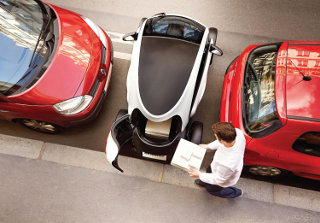
Parking the Twizy Cargo is much easier than with a conventional small van.
The Twizy Cargo is based on the standard Twizy — which is pretty wacky in the first place. The rear passenger seat is swapped for a 180-litre boot with an opening and lockable door.
The load area can take loads of up to 75kg and the rear door opens to 90 degrees, making it easy to load small packages quickly. The Twizy’s small size also means it can be parked at right-angles to the pavement, rather than parallel to it, as the picture alongside this article shows — this makes for speedy parking and getaways, even on busy streets.
As a car-derived van, with fully recoverable VAT, the Twizy Cargo is £650 cheaper than the standard model, at £6,241. According to Renault, VAT can also be reclaimed on its battery hire, from £36 per month (excluding VAT), making it even more financially attractive.
Although it could be used as a grounds vehicle on a large private site, the Twizy Cargo is clearly aimed at urban users and may tempt London businesses as it is exempt from the London Congestion Charge and offers eye-catching styling that should make it a great marketing tool.
Renault says that the Twizy Cargo has a real-world range of around 50 miles and can be charged from a standard three-pin electrical socket, by way of the in-built charging cable. A full charge takes just three and a half hours and will cost around £1, according to the French manufacturer.
Technical Specification
| Top speed | 56 mph |
| Range | 62 miles (NEDC). Real world conditions circa 50 miles |
| Power | 17hp |
| Boot capacity | 180 litres |
| Boot dimensions | 550mm (d) x 500mm (l) x 950mm (h) |
| Max load | 75 kg |
| Vehicle dimensions | 2338 x 1237 x 1454mm |
| Unladen weight | 375kg |
| Kerb weight | 474kg |
Although the Twizy Cargo’s 56mph top speed isn’t going to tempt drivers out of town — and no doubt would be a slightly scary prospect on a motorway– it is more than adequate for urban use and sits well with the electric Twizy’s claimed real-world range of 50 miles.
With companies like Renault producing electric vehicles of this quality, I think that the future is looking good for electric cars and vans, although it will still be a long time until they become anything like mainstream choices, thanks to the continued problem of limited range and slow charging.

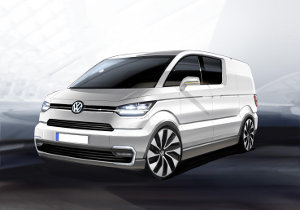
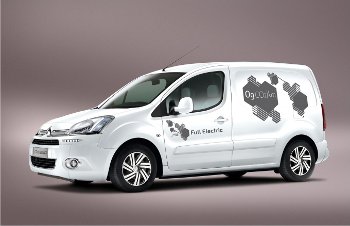
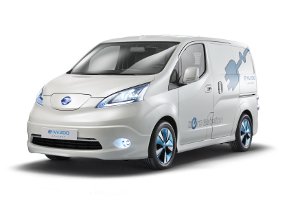
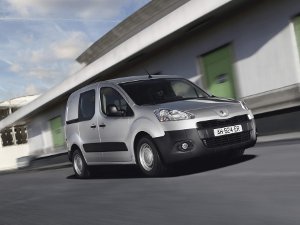
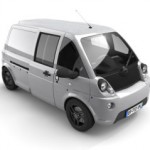
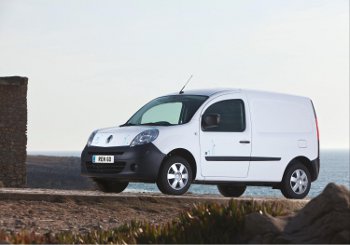
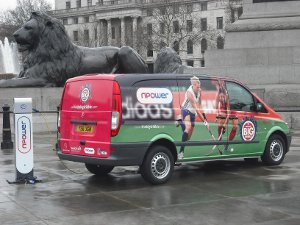 An all-electric Mercedes-Benz Vito E-Cell van is to be used by npower to power
An all-electric Mercedes-Benz Vito E-Cell van is to be used by npower to power 